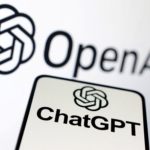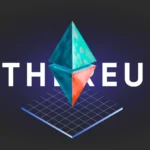Decentralized applications (dApps) are applications built on blockchain technology and smart contracts that operate without relying on intermediaries or centralized servers. The key feature of dApps is that they are built on open and transparent systems, such as Ethereum, and their operations are governed by smart contract code, which executes automatically when certain conditions are met.
Key Characteristics of dApps:
- Decentralization:
- dApps run on decentralized blockchain networks. This means that the application does not depend on a single central server or company, and users’ data is not controlled by one organization.
- Use of Smart Contracts:
- The foundation of most dApps is smart contracts, which automatically execute specific functions when the conditions are met. This makes the operation of dApps transparent and predictable.
- Transparency:
- The code of dApps and smart contracts is typically open for auditing, allowing anyone to verify the application’s integrity.
- Censorship Resistance:
- Since dApps operate on decentralized blockchains, they cannot be easily shut down or censored, unlike traditional applications.
- Tokens:
- Many dApps have their own tokens, which can be used within the application for accessing services or interacting with the community. Tokens can also serve as incentives or rewards.
Examples of dApps:
- Uniswap (Decentralized Exchange, DEX):
- Uniswap is a dApp on the Ethereum blockchain that allows users to exchange cryptocurrencies directly, without intermediaries. Users can add liquidity to pools and receive rewards for their contributions.
- Aave (Decentralized Lending Platform):
- Aave enables users to lend and borrow crypto assets. All operations are done using smart contracts, eliminating the need for banks or centralized lenders.
- CryptoKitties (Blockchain Game):
- One of the first dApps, CryptoKitties allows users to breed, buy, and sell virtual cats on the Ethereum blockchain. Each cat is a unique NFT (Non-Fungible Token).
- MakerDAO (Stablecoins and Decentralized Lending):
- MakerDAO allows users to create the DAI stablecoin, which is pegged to the US dollar. This is achieved through crypto collateral in the system and the use of smart contracts to maintain stability.
Advantages of dApps:
- No Intermediaries:
- Users can interact directly with dApps without relying on centralized operators, reducing costs and risks associated with third parties.
- Transparency and Trust:
- The open-source code of smart contracts ensures a high level of trust in the applications. Users can check how the application works and confirm its honest execution.
- Security and Resistance to Hacks:
- Due to their decentralized nature, dApps are less vulnerable to hacking and service interruptions since there is no central server to target.
- Censorship Resistance:
- dApps are less susceptible to censorship by governments or other organizations due to their operation on decentralized blockchains.
Disadvantages of dApps:
- Scalability:
- A significant challenge for decentralized applications is scalability. Blockchains, like Ethereum, can experience network congestion, leading to slow transactions and high fees.
- User Experience:
- The user interface and usability of dApps are often more complex than traditional applications, which may discourage new users.
- Dependence on the Blockchain Network:
- The performance and cost of using dApps depend on the state of the underlying blockchain. For example, during periods of high demand, transaction fees on Ethereum can become very high.
- Vulnerabilities in Smart Contracts:
- Bugs or vulnerabilities in smart contracts can lead to loss of user funds or incorrect contract executions. Examples of dApp hacks underscore the importance of thorough code auditing.
How dApps Work:
- Frontend: The external interface of a dApp typically looks like a traditional web application, but special software like MetaMask (a browser extension for Ethereum) is needed to interact with the blockchain.
- Backend: The heart of a dApp is the smart contracts deployed on the blockchain. These contracts govern all transactions and actions within the application.
Blockchain Platforms for dApp Development:
- Ethereum: One of the most popular platforms for dApp development due to its robust support for smart contracts.
- Binance Smart Chain: An alternative platform for building dApps with lower fees.
- Solana: A blockchain known for its high speed and low costs, actively used for dApp development.
- Polkadot: A blockchain that enables the creation of interconnected dApps with the ability to interact with other blockchains.
Conclusion:
dApps are a new way of building applications using decentralized blockchain technologies to ensure autonomous and transparent operations without the need for centralized infrastructure. While they offer many advantages, such as censorship resistance and high security, they also face challenges in scalability and user experience. dApps open up new possibilities for finance, gaming, trading, and other industries, giving users more control over their data and assets.












 Cryptol – your source for the latest news on cryptocurrencies, information technology, and decentralized solutions. Stay informed about the latest trends in the digital world.
Cryptol – your source for the latest news on cryptocurrencies, information technology, and decentralized solutions. Stay informed about the latest trends in the digital world.